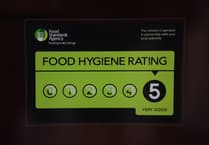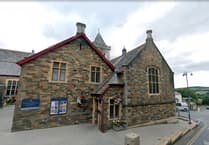DEVON and Somerset Fire and Rescue Service is reminding the public to make sure their chimneys are as safe and clean as possible, especially for those with a thatched property.
Last year, the fire service attended a total of 26 thatched fires. Of these, 23 were chimney fires, and three were thatch roof fires.
Marc House, community safety prevention manager, said: “Fire in a thatched roof is difficult to detect and once started is difficult to control. Once a fire has taken hold within a roof, it will spread rapidly, due to the very nature of how thatch burns — and often the results are devastating.
“To keep yourself and your family safe from fire, you should take care to have your chimney swept regularly, depending upon what fuel you burn. If the worst should happen, a smoke alarm can give you the extra time you need to escape in a house fire — make sure you test yours regularly.”
Fire in a thatch is not an inevitable occurrence, but it is an organic material, subject to different behaviour patterns depending on its surroundings, treatments and choice of materials or styles. It has a finite life span, measured in tens rather than hundreds of years, and above all it is combustible.
Modern enclosed solid fuel appliances are designed to burn efficiently and cleanly. Often flues pass through old chimneys, where there is only a four-inch thickness of brick, which makes the thatch especially vulnerable to the risk of heat build-up and eventually combustion at a point between the brick and the thatch.
The danger zone for heat transfer and where a fire may start in a thatch is more associated with older and, or, listed properties with any two or more of the service’s conditions.
As well as this, owners of properties should also check chimneys that include a central chimney surrounded by thatch or a house that is part of a terrace; electrical faults and careless workmen, any recessed halogen spot lights — those particularly in bedroom or bathroom ceilings; security lights, situated too close to the eaves, as any outside lights — particularly those fitted with motion sensors — should be installed at least one metre away from any thatch; discarded cigarettes and garden bonfires; television aerials on thatched buildings should be fitted to a freestanding pole. Where this is not possible, the aerial should be fixed to a gable or gable-end chimney, where the cable can be run down the wall, avoiding contact with the thatch. Disconnect television aerials during electrical storms to prevent damage to the system.
Fit working smoke alarms on each floor level in the home. Consider buying an alarm with a ten-year battery, or alternatively, change the battery every year, and regularly test smoke alarms.
For more information and to download the service’s booklet, visit their webpage or the Thatch Advice Centre on www.thatchadvicecentre.co.uk



